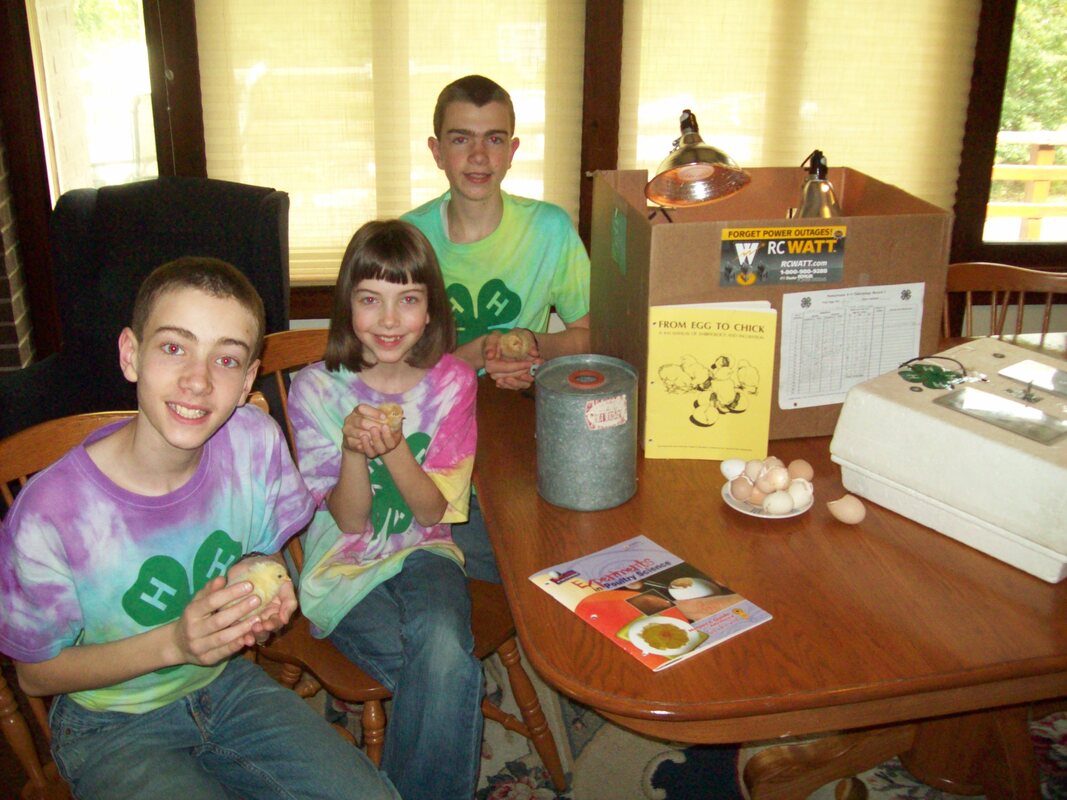It was April 1, 2010. I was 8 years old and was holding a dozen fertilized eggs that my family had bought to incubate.
As we drove home with the eggs, I was full of excitement. We were going to hatch baby chicks! Eventually, we'd have a flock of Buff Orpington and Black Australorp hens and eat fresh eggs for breakfast!
Once home, my brothers and I took pencils and lightly marked each egg with a "O" on one side and "X" on the other. This was because we'd be rotating the eggs 3 times daily and would need to track which side was up.
We then placed the eggs in an incubator, with the temperature set to 100.5° F, and for the next 17 days, we rotated the eggs from side to side at 7 AM, 2 PM, and 9 PM. We needed to rotate the eggs this frequently to keep the yolk, which would otherwise float to the top, centered in the egg and to prevent the developing embryo from sticking to the membrane. Normally, the mother hen would rotate the eggs, but my brothers and I were "the mother hen." Good thing we were homeschooled because we needed to be around to turn those eggs!

A detailed spreadsheet where we tracked the room temperature, incubator temperature, which side of the eggs were turned up, and any concerns or observations.
About half-way through incubation, we experienced a 24-hour power outage. The house went dark, but then our power was restored within seconds when our RC WATT installed standby generator kicked on and kept the incubator kept running. Phew! The developing chicks were saved, and our project continued.


"Peep, peep!" It was day 21 of incubation. "Did you hear that?" someone asked, as we ate breakfast. There were noises coming from the incubator! As the hours ticked by, the peeps continued, and little cracks began to show in the eggs. The chicks were hitting against the inside of their shells with their "egg teeth," temporary horny caps on each chick's beak, to break free.
As the chicks hatched, we carefully picked up their wet bodies and placed them in a brooder on our dinning room table. A few hours later they were as cute and fluffy as could be.
As the chicks hatched, we carefully picked up their wet bodies and placed them in a brooder on our dinning room table. A few hours later they were as cute and fluffy as could be.


By the end of the day, all the eggs had hatched, except one. There was a small crack in the remaining egg, but that was all. The chick inside appeared to running out of energy and didn't peep much. What should we do?
My brother Ben intervened. He took the egg out of the incubator, carefully peeled the tough shell, then removed the membrane. Finally, there was a blood vessel connected to the membrane and to the bottom of the chick that needed cut. "Alex, please hand me the scissors," he told my oldest brother. Snip. The chick was free at last.
Our project was a success. All 12 chicks had hatched and were healthy. We incubated eggs again in 2013 and kept hens from 2010 - 2017. Here is a YouTube video that I made when I was 13 about our second incubation project.
My brother Ben intervened. He took the egg out of the incubator, carefully peeled the tough shell, then removed the membrane. Finally, there was a blood vessel connected to the membrane and to the bottom of the chick that needed cut. "Alex, please hand me the scissors," he told my oldest brother. Snip. The chick was free at last.
Our project was a success. All 12 chicks had hatched and were healthy. We incubated eggs again in 2013 and kept hens from 2010 - 2017. Here is a YouTube video that I made when I was 13 about our second incubation project.

